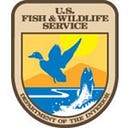Five Birds That You Can Help Simply By Drinking (Bird Friendly) Coffee
Mmmm, Coffee. Whether black, loaded with sugar, or frothed into a latte and spiced, It’s a morning (and afternoon) ritual for millions of Americans. But did you know that drinking coffee can be good for birds?
Like many crops, most coffee farms are monocultures — they are grown in full sun, where the yields are higher. Unlike others though, coffee can grow under a canopy of trees. While the yields are lower, this shade-grown coffee still produces enough coffee to keep farmers in business, while providing a home for tree-dwelling birds. Hundreds of birds can be found on shade-grown coffee farms, as well as many other species of animals, and of course the trees themselves.
In 1997 the Smithsonian Migratory Bird Center created a “bird friendly” certification, which ensures that farms have enough habitat for birds, and are using organic farming practices. Like other specialty coffees, farmers are often able to obtain a higher price for their beans, which helps offset the lower yields of shade-grown coffee. And some people say bird friendly coffee produces a better taste too!
Some programs, like the Neotropical Migratory Bird Conservation Act Grants Program and Partners in Flight, also work to help “beans and birds” through research and funding to help local coffee farmers create a quality habitat for birds.
Before you run to the kitchen to grab a cup, here are some birds to think of when you drink.
Baltimore oriole
This bright orange bird loves fruit. During the summer, they will often feed on an orange slice hung in a backyard. In the winter, they feed on fruits, nectar, and insects.
Wilson’s warbler
These small yellow birds spend their summers in western and Canadian thickets near water before heading to Central America and Mexico for winter.
Cerulean warbler
This stealthy bird spends its summers high in the tree canopy, so it can be a rare sight. They frequent coffee plantations in Mexico and Central America during migration and winter, and they even do some work by controlling insects that eat coffee plants.
Their populations have declined by over 70% since 1970, so having a place to stay in the colder months is extra important.
Painted Bunting
This bird spends its summers in the Southeast, where it forages for seeds in shrubs and on the ground. They winter from Southern Florida to Northern Panama
Western tanager
The western tanager spends the breeding season in coniferous forests, where it forages for insects and fruit. Its reddish-orange feathers come from compounds in some of the food it eats.
No matter what you drink — whether it’s an espresso or a light roast in a French press — there’s a bird friendly coffee for you, and hundreds of species of birds. Knowing you are helping them might make that buzz that much better!
By Chris Deets, Outreach and Education Coordinator
